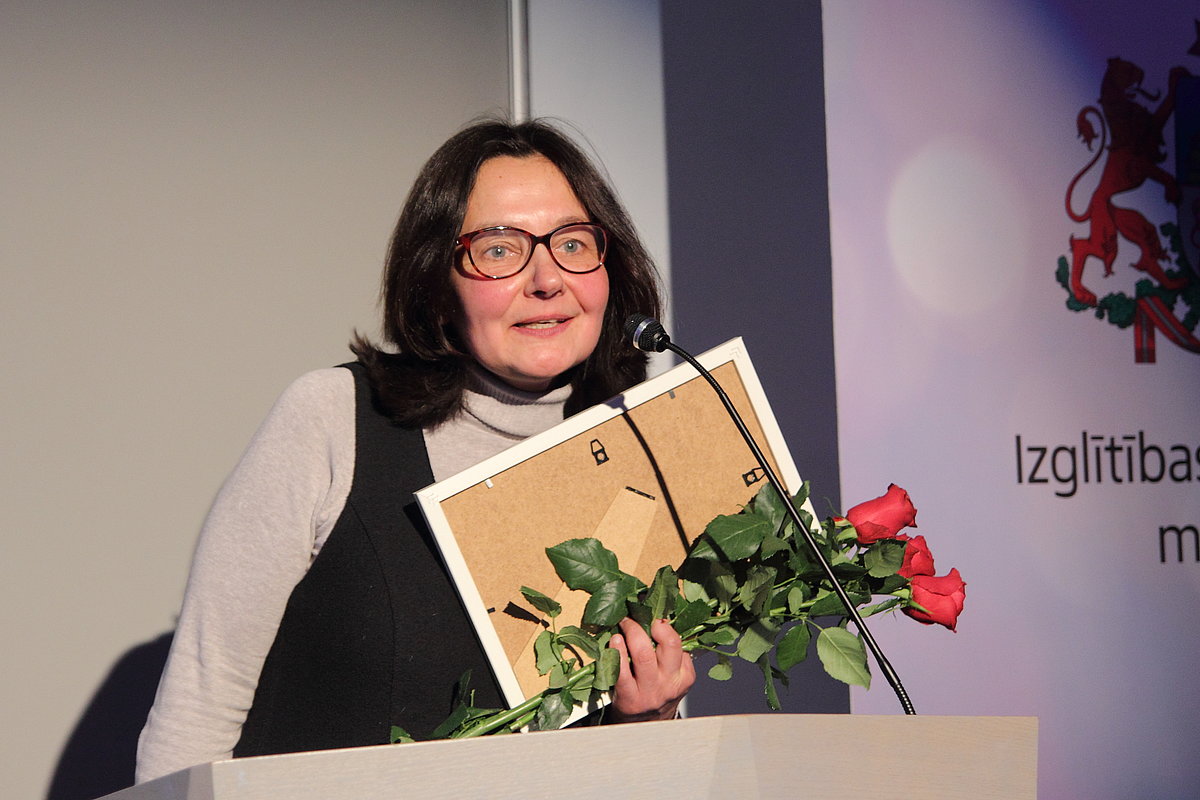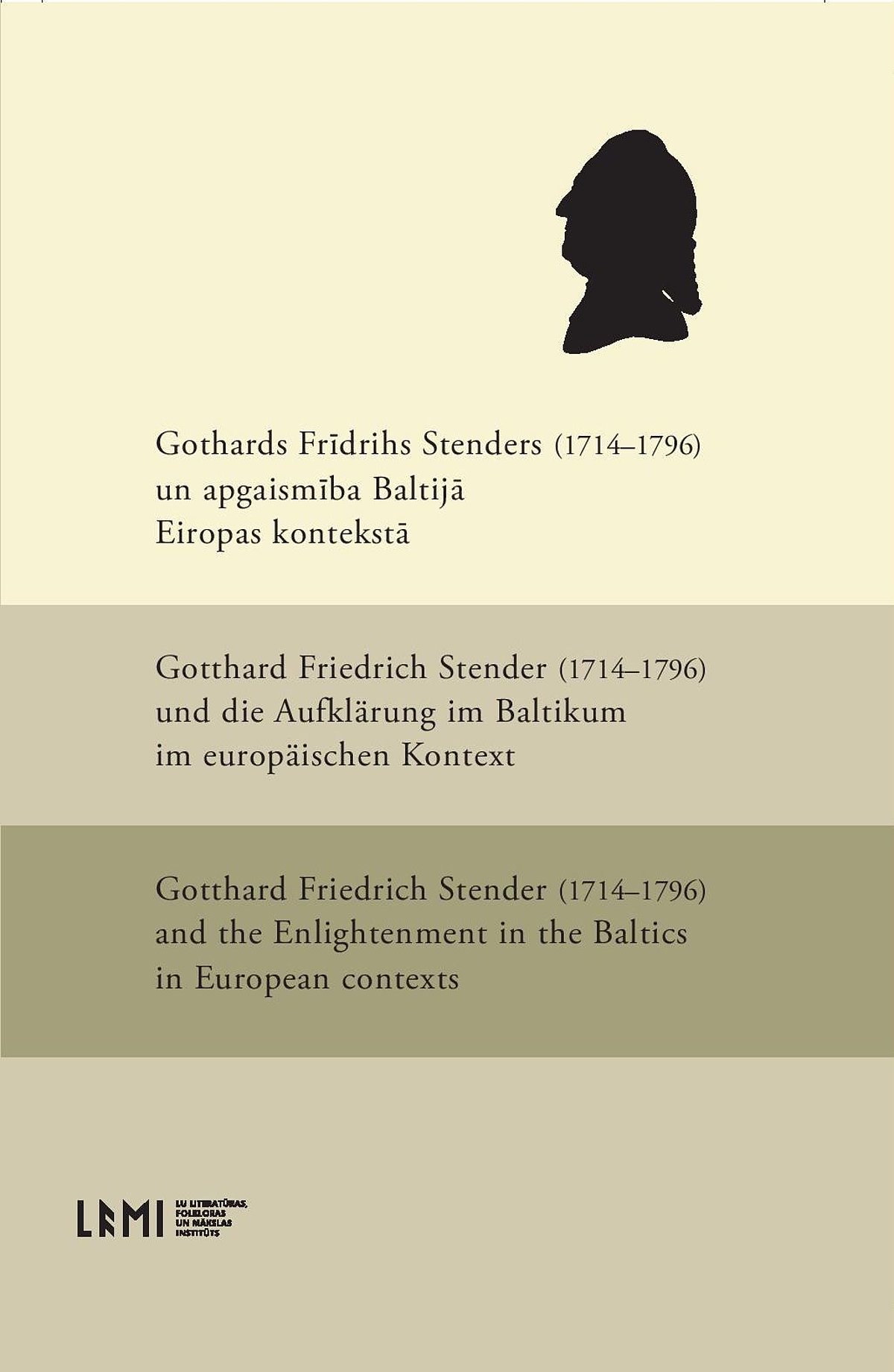The personality and work of Gotthard Friedrich Stender, an outstanding 18th century Baltic German theologian and literary scholar have for the first time been viewed from an interdisciplinary perspective, placing it in the broader context of European Enlightenment. The collection of articles summarizing the studies of Stender's creative life is recognized as one of the most significant scientific achievements in 2018.
The collection of articles “Gotthard Friedrich Stender (1714–1796) and the Enlightenment in the Baltics in European contexts” contains Latvian, Estonian, Lithuanian, German, Czech, Georgian and American studies dedicated to the personality of Baltic German theologian and literary scholar Gotthard Friedrich Stender, his era and the continuation of Stender’s literary tradition in Latvian culture of the 19
th century. The studies presented at the conference dedicated to Stender in 2014 at the National Library of Latvia have now been released in a single collection.
The book will bring new revelations to all those interested in the Age of Enlightenment, the author of a compilation of articles, assures
Dr. philol. Māra Grudule, the leading researcher at the University of Latvia Institute of Literature, Folklore and Art.
The collection contains articles dedicated to versatile themes: home music in the 18
th century, exploration of the ties between Nuremberg and the Baltic in the sphere of art, study of Old Stender as a book illustrator, activities of Baltic German women (Stender was the first to translate the song collection by Baltic German writer and poet Elisa von der Recke into Latvian), Stender's picture ABC primer, his pedagogical beliefs, given names in Stender's dictionary and the 18
th century church registers, Stender's grammar in Latvian, Stender's linguistic views in the context of 18
th-century German linguistics, a comparison of Stender's fables and Lithuanian fables, Stender's poetry as a spiritual revolution in literary culture of the 18
th century Kurzeme, his friendship and correspondence with both Harder brothers – Vidzeme clergymen, Stender’s reception at the end of the 19
th century, and numerous other aspects of his extensive work and versatile personality.
Globes and washing machine
Stender has spent much of his life in Kurzeme, but his life story has also left lasting traces in European culture linked to Denmark and Germany. Germany was the place of Stender’s student period, and he returned to Hamburg again in the prime years of his life, and spent some time in Copenhagen. M. Grudule notes that in all those places, he kept his eyes open and gained mental enrichment from every culture, while also leaving his traces in these countries.
One of Old Stender's most important works was the creation of two globes – one for the Royal Library of Denmark, and one for the King of Denmark. “The globe was a fashionable object of the time, a part of every self-respecting home and royal court, used both for teaching the children and, of course, reference, as well as simply as an attractive room decoration,” explains M. Grudule. The globe housed at the Royal Library of Copenhagen was displayed at the conference held at the National Library of Latvia in 2014, and enjoyed immense interest of the viewers, therefore the exhibition was extended, recalls M. Grudule.
Stender has also written a brochure on mechanical washing machine, the first brochure of its kind in German language.
Stender read extensively and had a profound interest in German literature. At one time, reading the works by the most outstanding German poets, he translated these into Latvian, achieving a light, entertaining and didactic manner. His translations were also analysed at the conference, and the researchers tried to discern the reasons behind the selection of works Stender chose to translate, and those that remained outside his translation range.
Stender’s place in European culture reclaimed
The conference was unique in extensive exploration of Stender’s contribution to European culture, emphasizes M. Grudule: “A great part of the papers looked at the role of Stender in Kurzeme and the Baltics, but there was also an emphasis upon his European contribution. From a religiously philosophical perspective, Stender was a conservative Baltic pastor, but his ideas were of interest to Johann Gottfried Herder, causing his polemics regarding a Stender's article on the Holy Trinity. It is an entirely new material, and Herder's reference to it – likewise,” emphasizes M. Grudule.
M. Grudule describes Stender as somewhat of an outsider among theologians of Kurzeme. Unlike other pastors of Kurzeme, he was not a member of the Königsberg Scientific Society. Stender called himself a member of the Göttingen Scientific Society, however, no documentary evidence was found to confirm this status.
After experiencing the constant exuberance of public and scientific life in Copenhagen, Germany and St. Petersburg, Old Stender returned to Kurzeme and spent the last 30 years of his life in the rather remote Sēlpils-Sunākste parish.
When asked, whether Stender has been undeservedly forgotten in Latvian culture, M. Grudule concedes that it is the matter of Latvian attitude regarding their own culture and the history of culture overall.
The researcher asks: “Where do we perceive the roots of our culture to be? Do we see them in the age of awakening, the 19
th century, in Pumpurs, the songs of Alunāns, are these our roots? Are our roots related to Baltic German culture? We are aware of the fact that the ring of Namejs, figuratively speaking, is ours, but what happens between the ring of Namejs and Juris Alunāns – do we see and know that?”
M. Grudule confirms that the biography of Stender contains much yet to be revealed, therefore the studies could continue.


 Academic Centre
Academic Centre